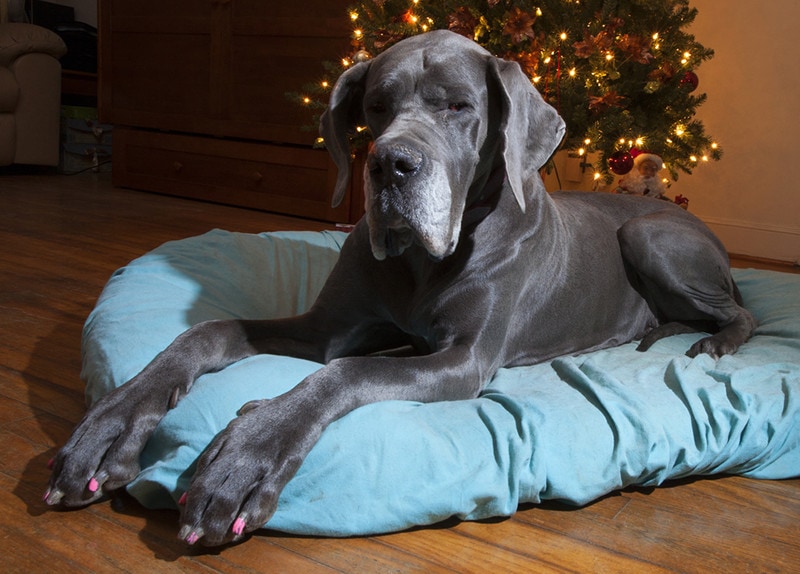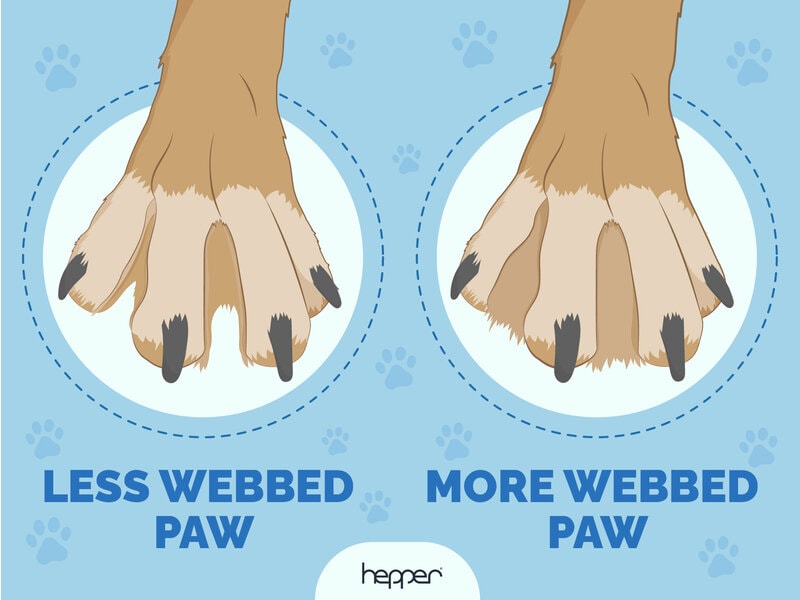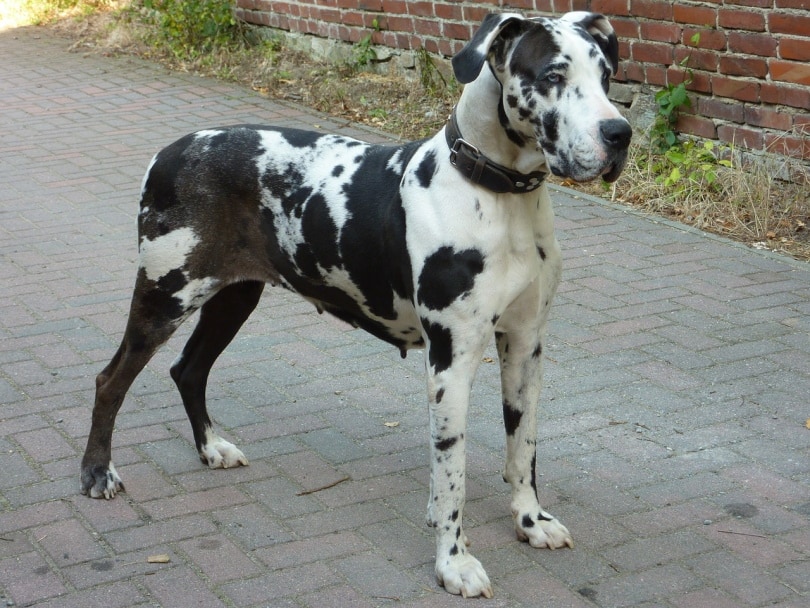Do Great Danes have Webbed Feet? The Surprising Answer!

Updated on

Great Danes are gentle giants that can be taller than most people when they stand on their hind legs. They are adored not only for their friendly and kind nature but also for their floppy ears, droopy eyes, and impressive size. They can stand at about 32 inches tall and weigh up to 160 pounds, which makes their size one of their most distinctive characteristics. Another characteristic a Great Dane is rumored to have is that its paws are webbed.
So, is it true, do Great Danes have webbed feet? Yes, Great Danes have medium-sized webbed feet. Most dogs have webbing between their toes, though some have more than others. Great Danes with webbed paws are very common, but not all of them carry this trait.
Now that you know Great Danes have webbed feet, you may be intrigued! Continue reading to find out more about this fascinating trait.
How Can You Tell If Your Great Dane Has Webbed Feet?
All dogs, like humans, have some level of webbing between their toes. What distinguishes a dog with webbed feet is the extent of webbing between its toes.
Between the toes of a webbed paw is a thin skin membrane. Check between your dog’s toes to see if a skin membrane between the toes forms a webbing pattern. The skin membrane on webbed feet extends all the way to the tip of the toes, whereas non-webbed dogs only have a small portion of the membrane between the toes.

Why Do Great Danes Have Webbed Feet?
The webbed feet are an important feature of any hunting dog. Great Danes were originally bred for hunting wild boar and guarding estates in Germany. When doing their job, they would tread over various surfaces, especially muddy and slippery terrain.
Their webbed feet help them by keeping them stable and preventing them from sinking. There was also a lot of snowfall in their native land, and webbed feet help significantly with grip when treading through the snow.
How are Webbed Feet Helpful?
If your Great Dane is gifted with webbed feet, don’t be alarmed, they can be a beneficial trait for various reasons.
- Swimming – Webbed feet are great for swimming. It is easier to propel forward and will require less effort than non-webbed feet. The webbing enables them to paddle faster with greater control in the water. Great Danes aren’t naturally great swimmers but possess physical traits that can help them learn to swim. They have long, strong legs and webbed feet; though they are large, their frame is thin and muscular.
- Digging – Webbed feet can be helpful when digging. The thin membrane between a Great Danes toe that makes them webbed can act as a shovel, scooping up sand and moving dirt around more easily.
- Easy Terrain Navigation – The webbing can improve the sturdiness and surface area of the foot, allowing it to move normally on most surfaces. Their feet are more protected from injuries as the webbing provides more grip and stability.

How To Take Care of Your Great Danes Webbed Paws
Webbed feet will require a bit of extra care, as dirt and debris can get stuck and build up in the webbing. Check the areas where your dog walks and plays to ensure that they are clear of debris to avoid paw injuries. Don’t walk your dog anywhere you wouldn’t want to go barefoot. Here are some tips to keep your dog’s paws healthy and safe.
Check Paws Regularly
Regularly check your dogs’ paws, especially if you are frequently outdoors. Check the webbing and pads for any thorns, pebbles, or bits of glass, and use tweezers to gently remove the material. If there is a minor wound or scratch, treat it with an antibacterial solution, but if any cuts seem deep, consult your vet as soon as possible.
- Allergies – Certain types of grass may cause contact allergies in some dogs, and seasonal allergies can also cause a dog’s paws to swell. To help avoid any allergic reaction, ensure your dog’s paws are always clean.
- Consistent Licking – Licking is a normal part of grooming for your dog, but if the licking is more intense and consistent, it may indicate an issue that needs attention, such as pain from injury, ticks or fleas, dermatitis, and allergies. It can also be a behavioral issue like anxiety. If your dog is constantly licking, or more than usual, consult your vet since the licking in one spot over and over can cause a bacterial or yeast infection.

How to Clean your Dog’s Paws
If your dogs’ paws need a quick clean, then a wet towelette or wet face cloth will do the trick. They can quickly and easily remove any light dirt and help get between the webbing and the toes. If you decide to use a towelette, make sure they are labeled pet safe.
If your dog has been running through thick mud, you must wash its paws thoroughly. The easiest way is over a sink or bathtub with a sprayer. The pressure from the sprayer will help loosen up any trapped dirt, especially between the webbing and the toes.
If your Great Dane has been playing in the snow, you will want to clean its paws straight away. If your dog licks the salt or ice that has melted from their paws, it can cause oral ulcerations, irritation, and even gastrointestinal upset. It usually accumulates between the toes, so that’s where you will need to pay attention. If your dog is comfortable wearing boots, they are the best preventive measure to ensure that no salt or debris gets on its paws.
Final Thoughts
Webbed feet are not uncommon, and the degree of webbing can vary between dogs. Some Great Danes may carry this trait, which can be beneficial in their swimming and digging abilities and allow them to adventure over different terrains.
If your Great Dane has webbed feet and you love the outdoors, ensure its paws and toes are cared for by cleaning and checking them regularly for dirt or wounds. If you live in colder climates where it snows, clean your dogs’ feet thoroughly after a walk in the snow.
See also:
- Do Pitbulls Have Webbed Feet? The Interesting Answer
- Do Australian Shepherds Typically Have Webbed Feet? What to Know!
Featured Image Credit: Augusten Burroughs, Shutterstock











